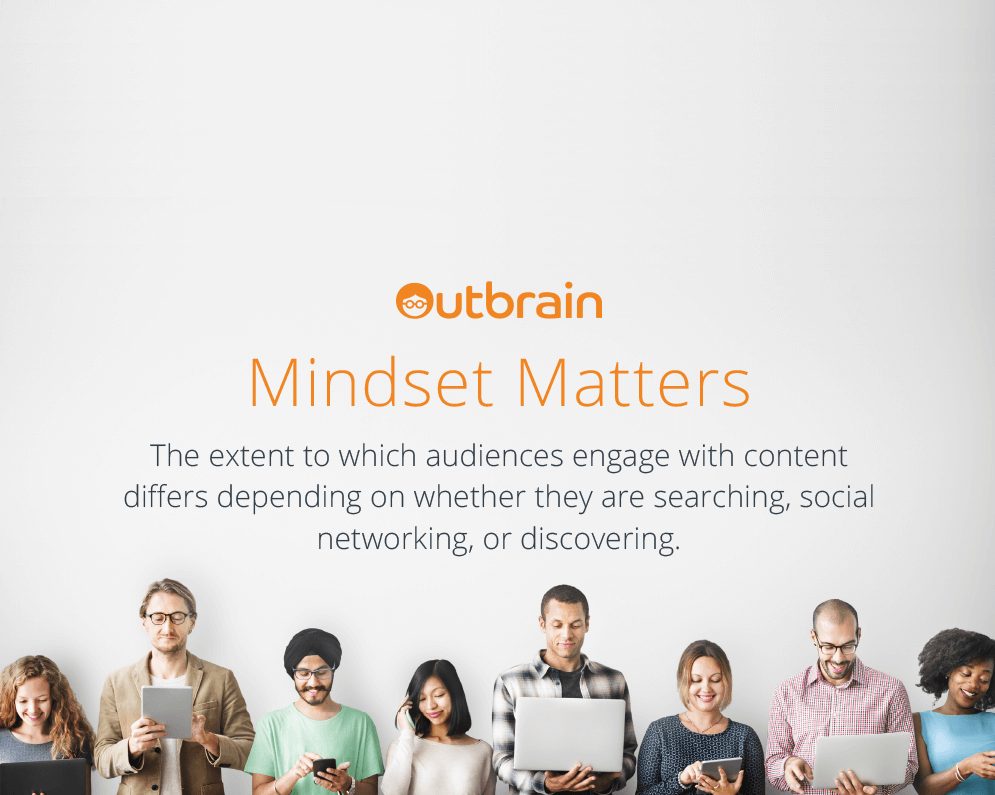How Mindset Impacts Content Engagement
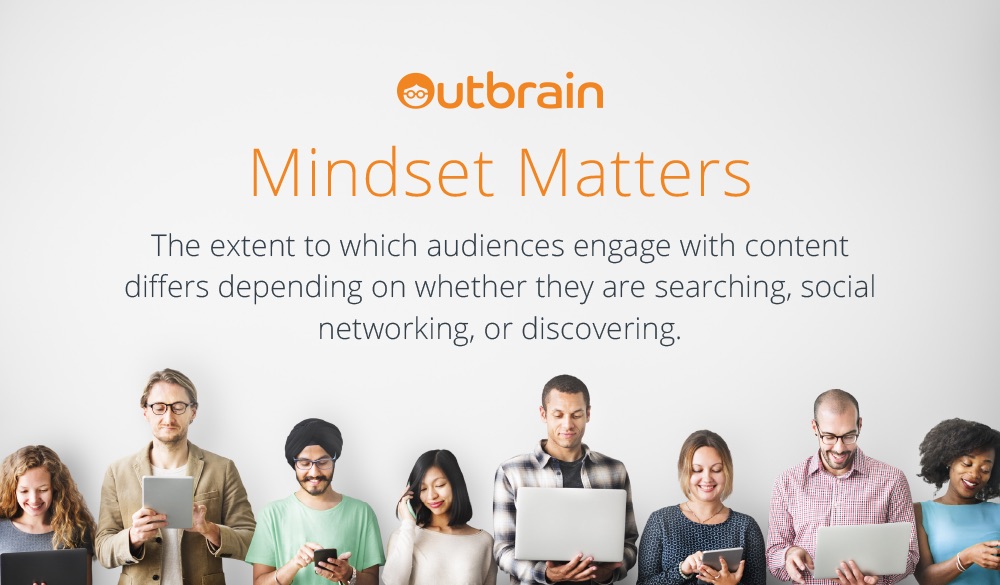
When it comes to promoting content, brands often evaluate their options based on which channel will deliver the most clicks as efficiently as possible. But that’s just one piece of the puzzle.
The hallmark of a successful content campaign is that it builds relationships with consumers and audiences. It is about more than just impressions. It is also about how deeply an audience interacts with your content.
This raises a key question: What if there is a correlation between audiences that are most likely to engage with your content and the channel or platform they are coming from?
This is something that LinkedIn (in partnership with TNT) also explored, in its Mindset Divide Study. The study surveyed 6000+ social media users across 10 countries and found that the type of content users engage with on personal networks and professional networks differ greatly. On a personal network like Facebook, users expected to see information from friends, information about their own personal interests, and entertainment updates. Meanwhile, those on a professional network like LinkedIn most expected to see career information, updates on brands, and current affairs information.
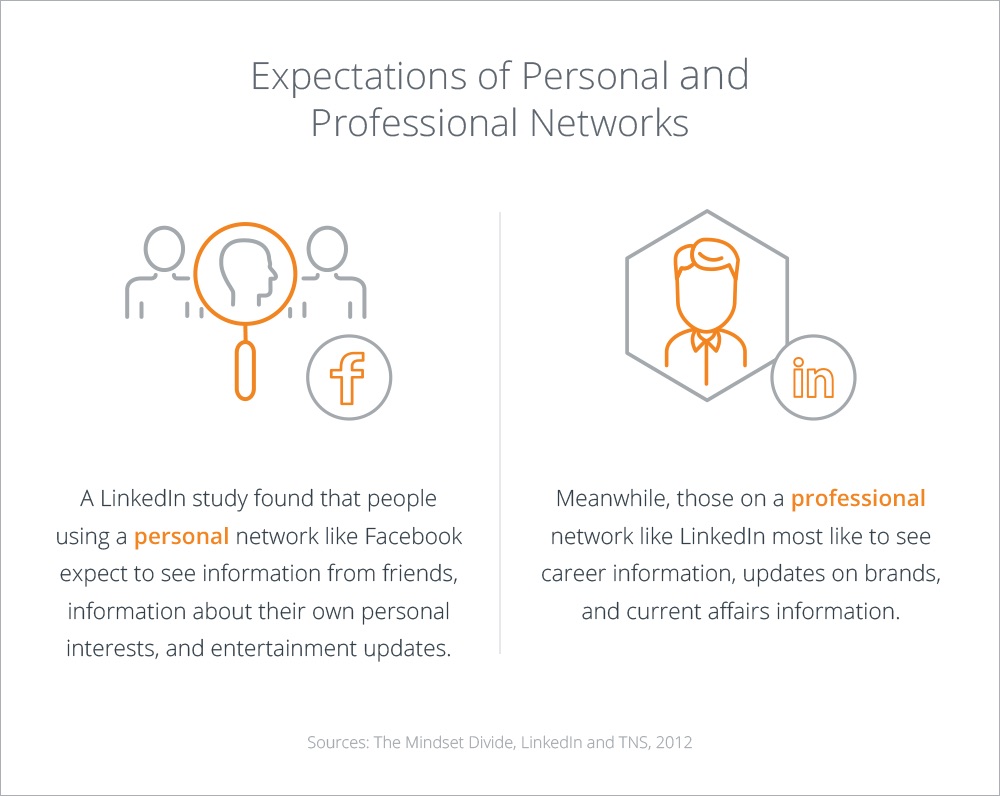
But what about a discovery platform like our own? Is mindset also a factor?
Since Outbrain tracks traffic to all content pages across our network of 100,000+ publisher sites, we are in a unique position to study engagement levels of incoming traffic at scale. This allowed us to compare engagement levels of traffic coming from various channels: search, social, and discovery.
We used a six month sample (January 2016 – June 21st, 2016) of data that included 83 billion global consumer sessions exceeding 165 billion page views of content in total. Our analysis focuses on the portion of these sessions that began on external sites and compares engagement of traffic referred by Search (Google, Ask, Bing, Yahoo), Social (Digg, Facebook, Reddit, Stumble Upon, Twitter), and Discovery (Outbrain).
Here’s what our analysis revealed:
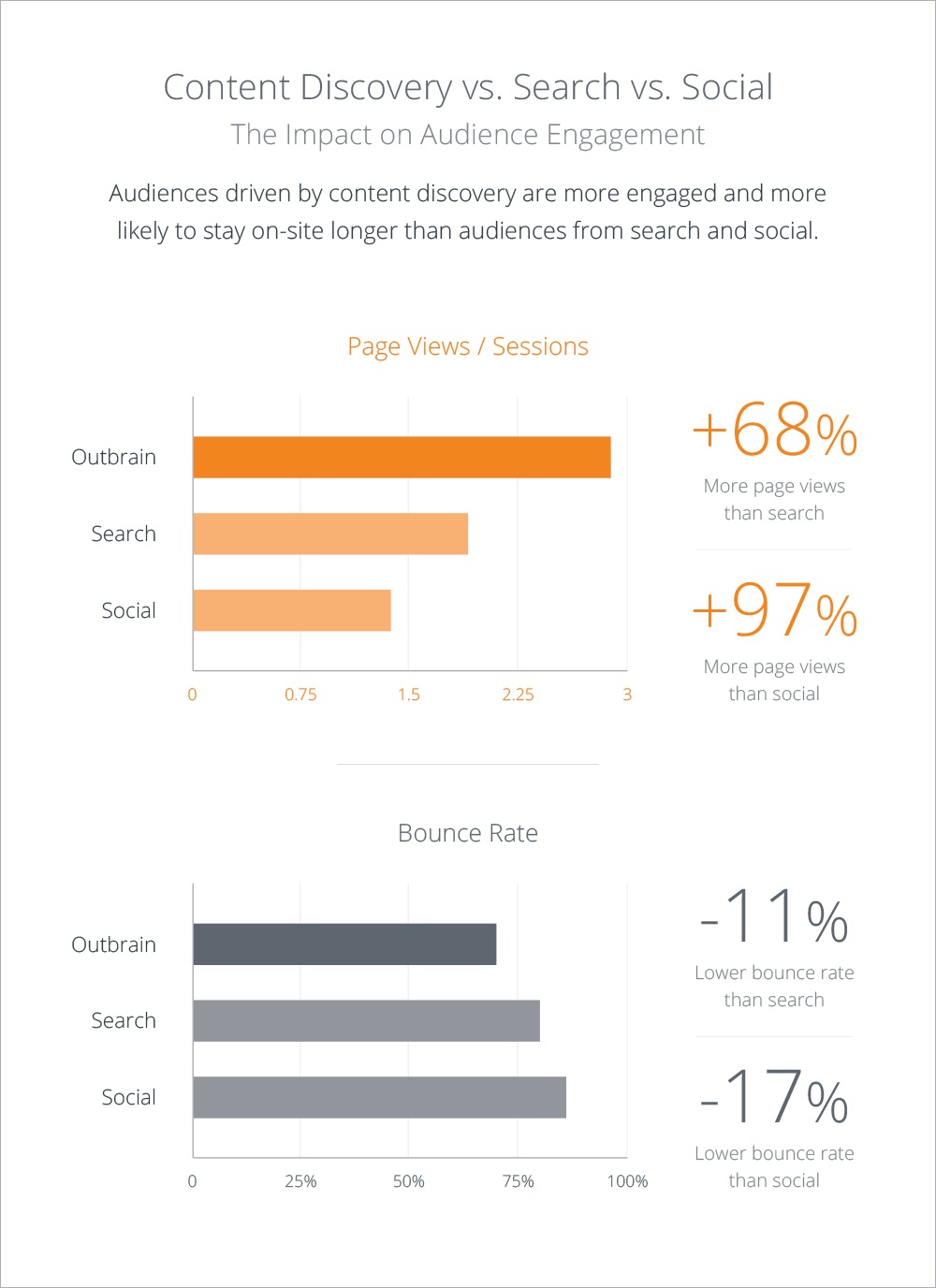
- 97% More Page Views than Social
- 68% More Page Views than Search
- 17% Lower Bounce Rate than Social
- 11% Lower Bounce Rate than Search
What This Tells Us
Our data suggests that the choices audiences make about what content to engage with is impacted by what channel they are on. For example, when audiences are in a discovery mindset, reading articles online on a premium publisher website, they are more likely to engage with recommendations about other articles they’d like to read than when they are on social media or search.
This finding aligns with a Pew Research study as well, which shows that social media is not the place that consumers go for news-type content, with only 4% trusting the news they see there.
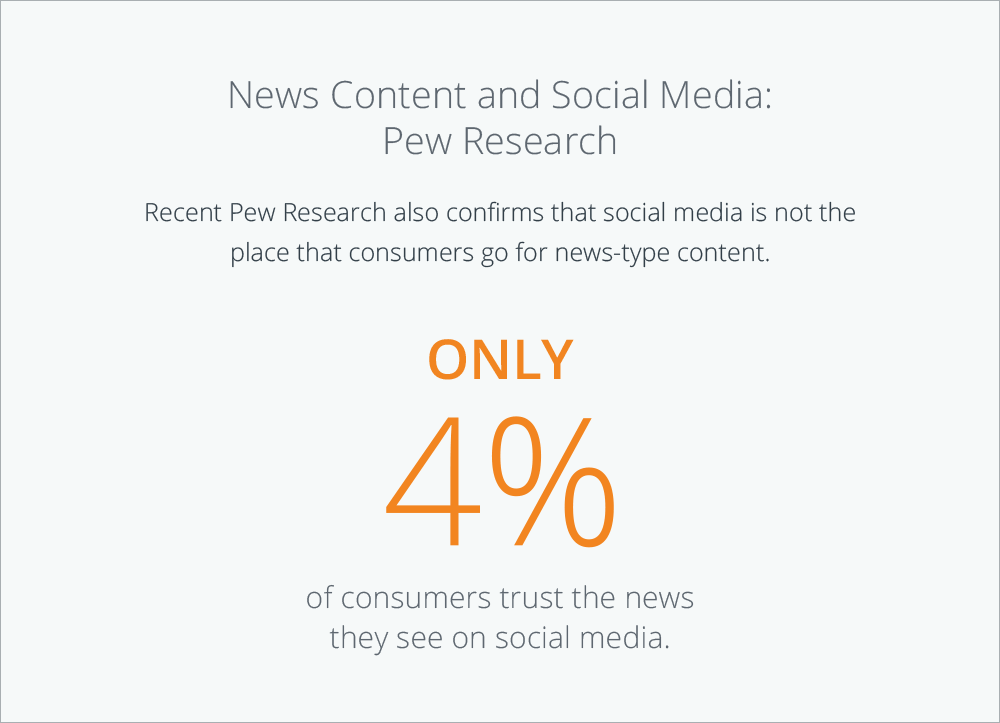
This insight could also be why Facebook recently tweaked its algorithm so users see less from publishers and brands and more from friends and family.
Key Takeaways:
Overall, as our data supports, an individual’s mindset is a factor when it comes to content consumption.
This is also why a channel like Outbrain, which serves content to audiences while they are already in content consumption mode, is a big opportunity for content marketers looking for to build deeper relationships with consumers and audiences.

